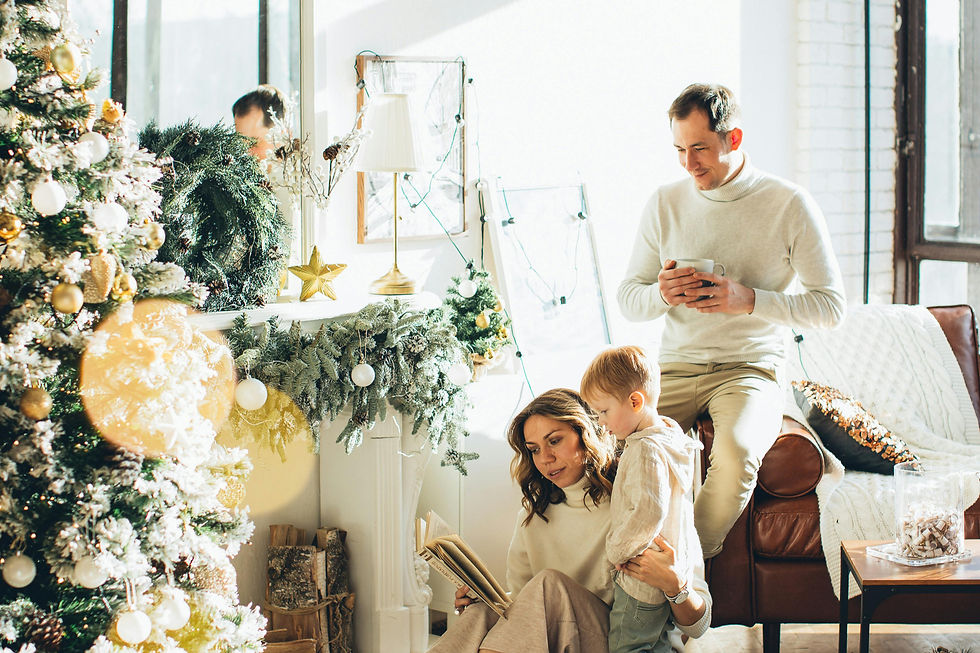Color by Design: A Journey Through the Power of Color in Decorating. Part 2 of 4.
- Werner Harmsen

- Nov 6, 2024
- 3 min read
Part 2: Mastering the Art of Color Matching
Welcome back to our color series! In the first installment, we explored the profound influence of color in home decor, highlighting how it can shape the mood and atmosphere of your spaces. Now, let’s dive into the exciting world of color matching—an essential skill that allows you to create harmonious and visually stunning environments.
Understanding Color Theory
At the heart of color matching lies an understanding of color theory. This includes concepts like the color wheel, which illustrates how colors relate to one another. Colors can be divided into three categories:
Primary Colors: Red, blue, and yellow; these are the building blocks for creating other colors.
Secondary Colors: Green, orange, and purple; formed by mixing primary colors.
Tertiary Colors: Created by mixing primary and secondary colors, offering a wider range of hues.

When matching colors, it’s essential to consider both the relationships between colors and the emotional responses they evoke. For instance, complementary colors—those opposite each other on the color wheel—create vibrant contrasts that can add excitement to a space, while analogous colors—those next to each other—produce a more harmonious and calming effect.
Creating Cohesion with Color Palettes
Once you understand basic color theory, it’s time to create a cohesive color palette. Here are a few tips to help you get started:
Choose a Dominant Color: Start with a primary hue that you love, whether it’s a rich blue or a warm terracotta. This will serve as the foundation of your color scheme.
Select Accent Colors: Choose two or three accent colors that complement or contrast with your dominant color. These can be used for smaller items like throw pillows, artwork, or decor pieces to create visual interest without overwhelming the space.
Incorporate Neutrals: Neutral colors like whites, grays, and beiges are essential in balancing your palette. They can serve as a backdrop, allowing your dominant and accent colors to shine while providing a sense of tranquility and sophistication.
Experiment with Shades and Tints: Don’t be afraid to play with variations of your chosen colors. Adding lighter tints (colors mixed with white) or darker shades (colors mixed with black) can create depth and dimension, making your palette even more dynamic.
The Power of Contrast
Contrast is a powerful tool in color matching. By juxtaposing light and dark colors, you can draw attention to specific areas of a room and create focal points. For example, pairing a dark blue accent wall with light-colored furniture can create a striking and sophisticated look. Similarly, using contrasting colors for cabinetry and countertops in a kitchen can add visual drama and interest.
However, balance is key. Too much contrast can be jarring, while too little can make a space feel flat. Aim for a harmonious balance that highlights your design elements without overwhelming the senses.

Practical Tips for Color Matching in Your Home
To help you confidently select and match colors in your space, consider these practical tips:
Use Samples: Always test paint samples on your walls or bring fabric swatches home before committing. Observe how they look at different times of day with varying lighting.
Create a Mood Board: Collect images, color swatches, and fabric samples that inspire you. A mood board can help you visualize how different colors work together and ensure a cohesive look.
Think Beyond Paint: Remember that color matching extends beyond just paint. Consider furniture, rugs, curtains, and decor items when planning your color scheme for a well-rounded approach.
As you embark on the journey of color matching, remember that the goal is to create a cohesive and inviting atmosphere in your home. By understanding color theory and experimenting with different palettes, you can elevate your decor and make thoughtful design choices that resonate with your personal style. Don’t hesitate to play, explore, and embrace the beauty of color—after all, your home is a canvas waiting to be painted with your unique vision.
-----
Next in the Series: Harnessing the Power of Light and Neutral Colors
Join us next time as we explore the strength of light colors and neutrals in home decor, and how they can enhance your living spaces while providing endless design possibilities!




Comments